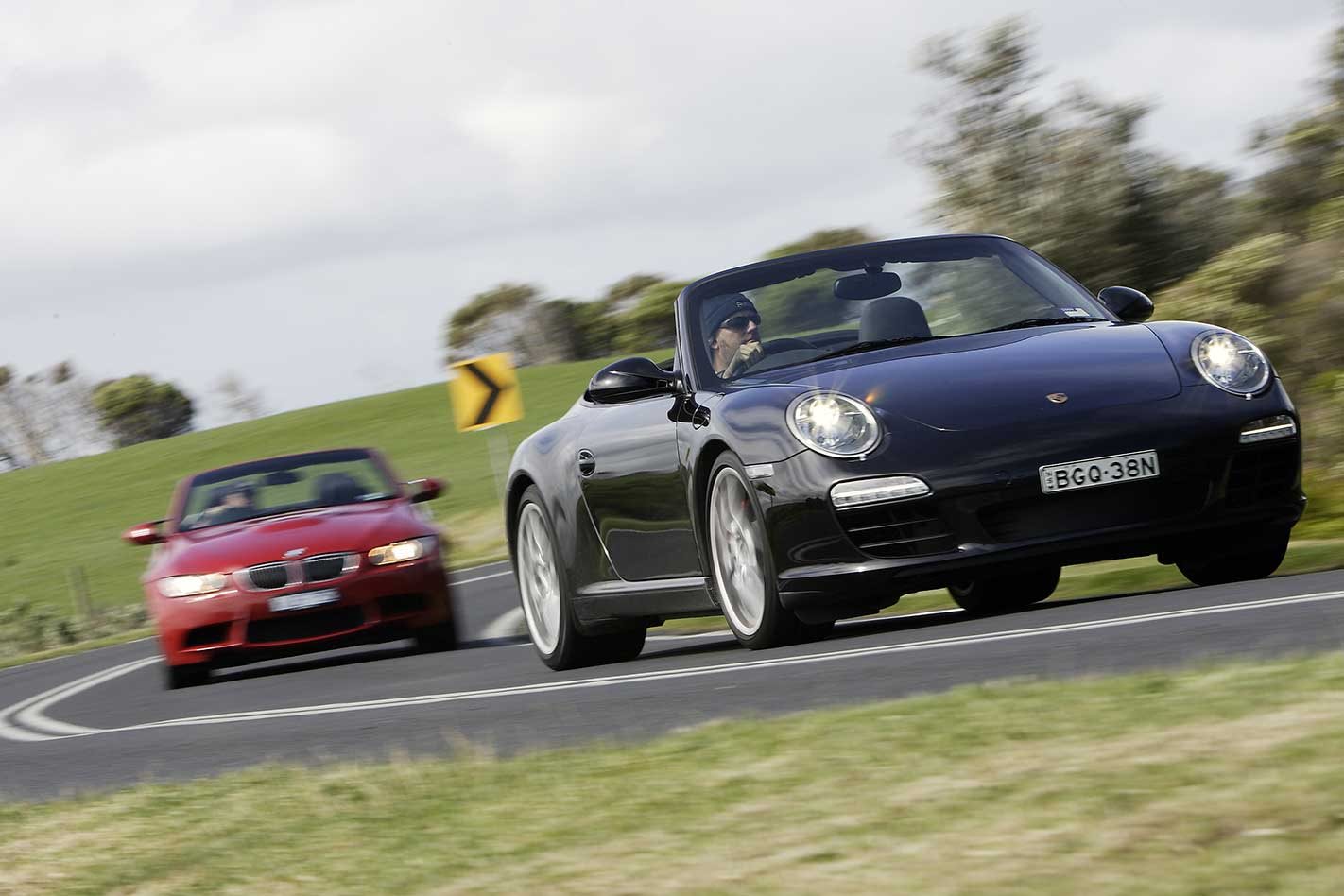I’m not a fan of convertibles. Cockburn can mutter into his beard (it’s a timid dog that has to bark from behind a hedge, no?) all he likes, but even his beloved E-Type would be a better car with a nice, secure, strength-giving steel roof welded on.
This feature was originally published in MOTOR’s December 2008 issue
I am even less – much less – charmed by clutchless manual gearboxes. The ones I’ve tried (with really only one exception) have been truly horrific. You know the sort of stuff; clunky, stilted shifts in auto mode and a manual mode that only ever makes the smallest bit of sense once you’re on a racetrack having a red-hot go.
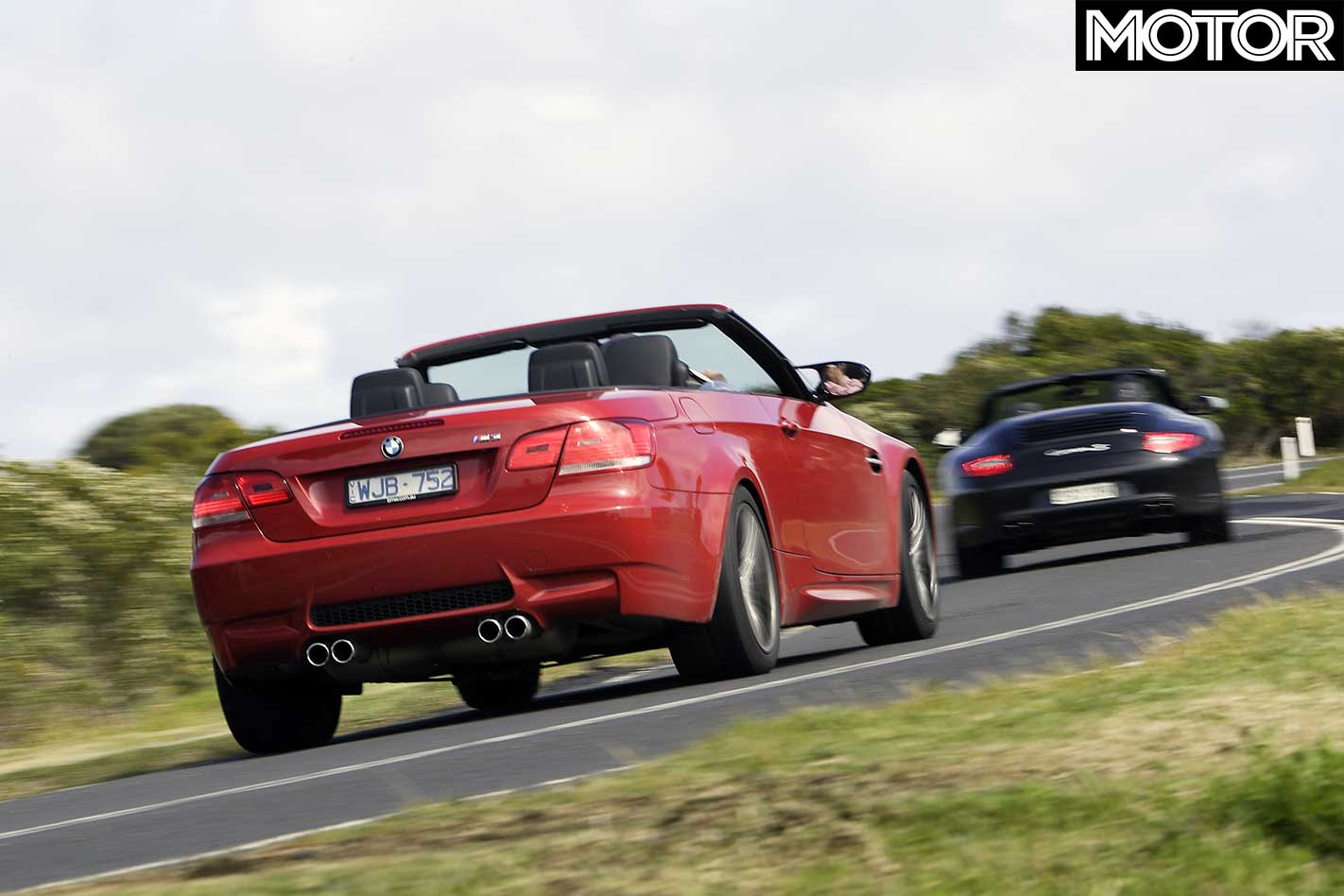
As I slither into Melbourne traffic at the wheel of the BMW, the only thing that stands a snowball’s of saving the next couple of days are the fact that the two cars in question are, and let’s be honest here, two of the ass-kickingest cars money can buy.
The M3 concept is familiar enough, but this car benefits from the new double-clutch DCT tranny in place of the accursed old SMG.
But that’s not all. This time around, BMW has adapted a funky folding-metal roof to the M3 giving, in effect, two cars for the price of one. Lidless M3s are not new, but the folding-metal variety are. The rest of the package is as the M3 template dictates: a 309kW V8 in a supple, sophisticated chassis bristling with electro-smarts.
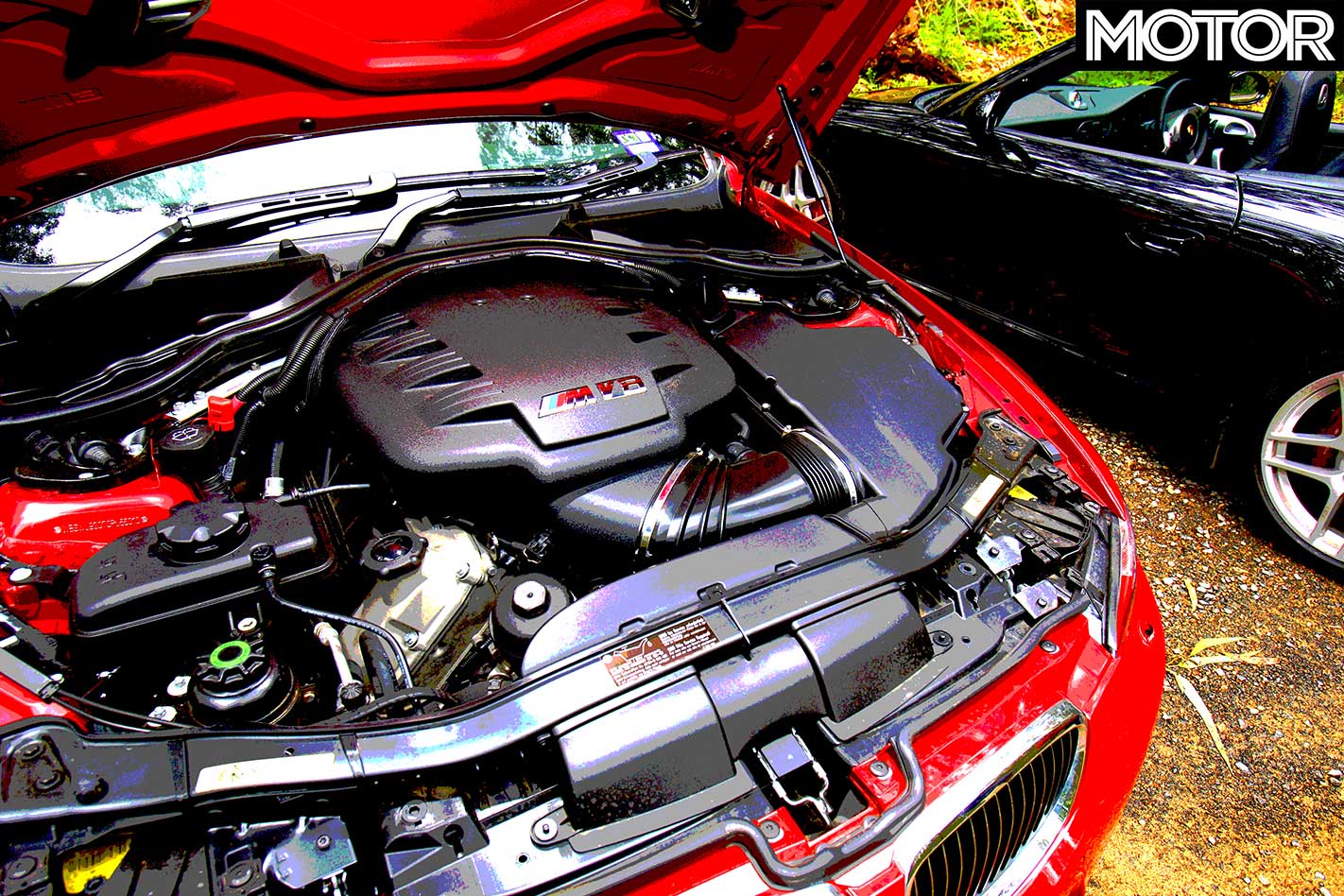
The other gadget is, as Blind Freddy and his labrador could tell you from the pictures, a Porsche 911.
It lacks the BMW’s metal hardtop arrangement, instead using a traditional folding-cloth top for what is, after all, one of the most traditional sportscars ever made.
What’s interesting, though, is that Porsche (which would like us all to think it’s at the cutting edge of technology) has only just got around to developing a workable clutchless trans (for a production car, anyway).
Previous two-pedal Porkers used the old Tiptronic unit which, aside from being nobbled by just five forward ratios (which used to be enough, you snivellers) also used a torque converter (it was a conventional automatic) instead of a pair of computer-controlled clutches as this one does. Porsche calls its new box of tricks ‘PDK’, which stands for Porsche Doppelkupplung (double-clutch gearbox, of course).
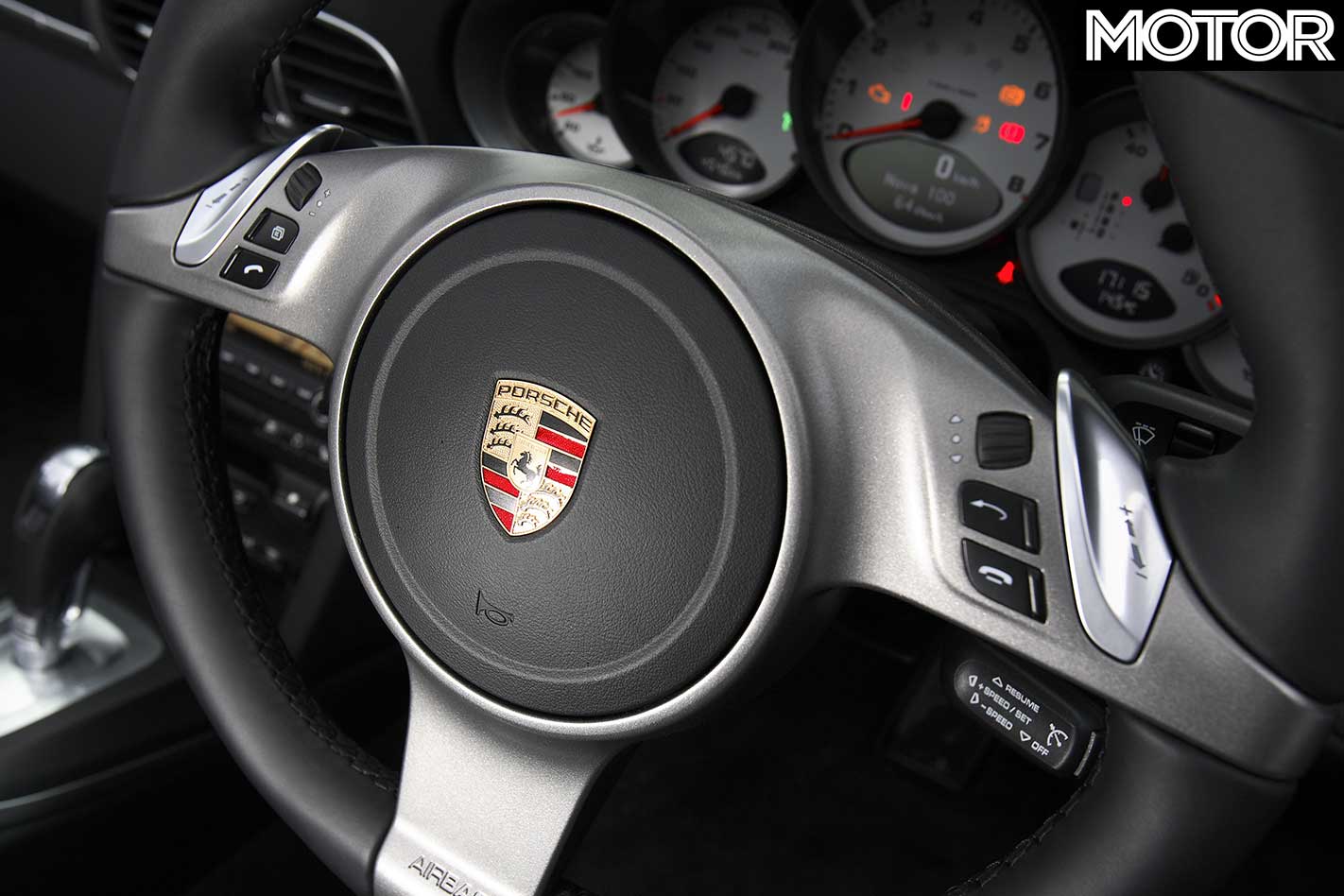
Both the BMW and 911 now sport seven gears for going forwards and the increasingly popular twin-clutch arrangement that is more or less two gearboxes side-by-side, a clutch on each one.
The magic is in the way the inactive side will have already selected the next gear and will be ready for the shift, taking over the drive from the active side in a micro-blink, just like a pair of 90W-lubricated relay runners swapping the baton.
The other big news down Zuffenhausen way is a new engine. The 3.8-litre displacement is familiar and so is the flat-six layout. But this is an all-new engine with more or less no carry-over components. Direct injection is the new thing at Porsche and we say bring it on, because the Carrera S you see here now uses less fuel than its predecessor and makes a WTF-worthy 283kW.
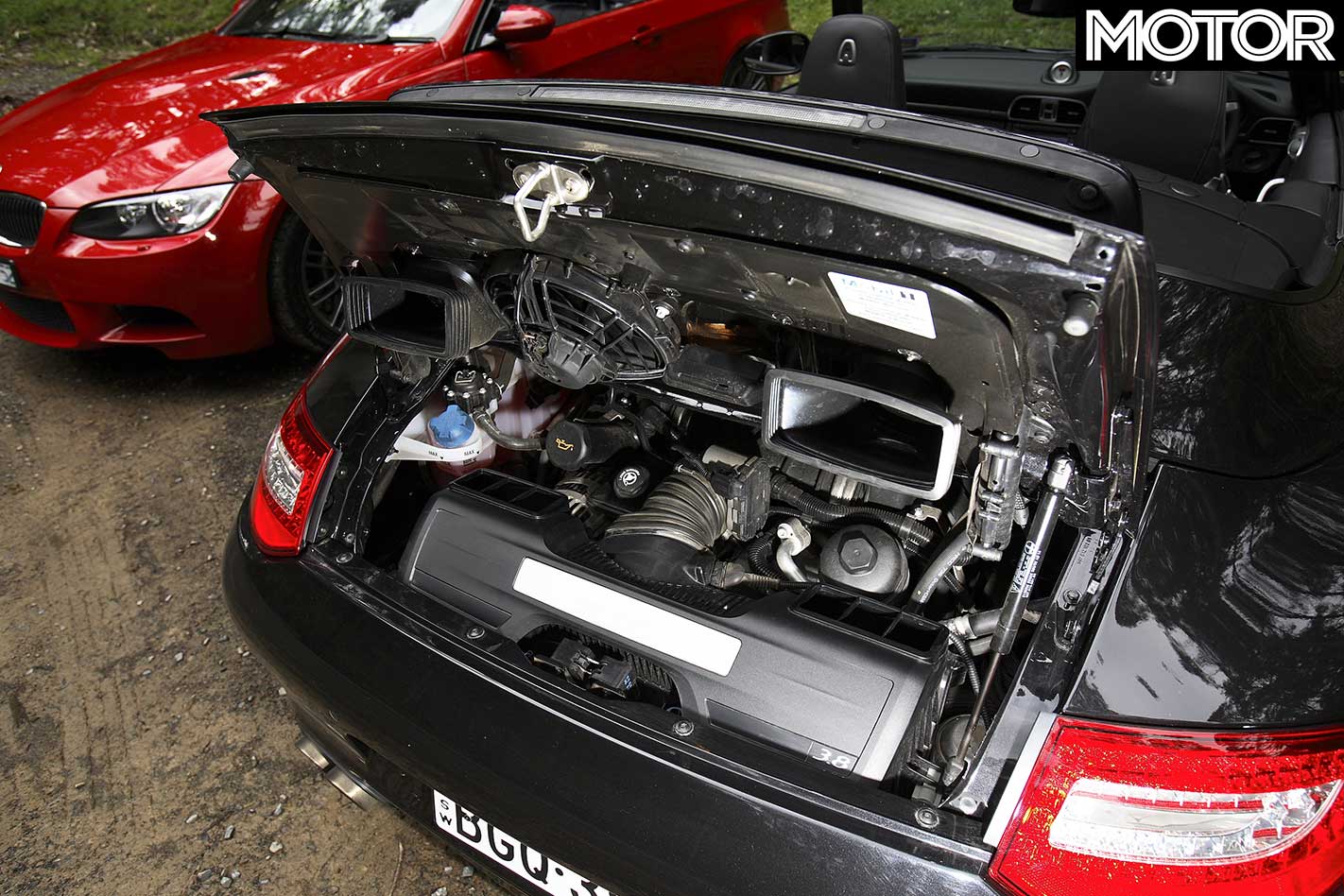
Obviously, both of these are seriously quick cars, but one of them is truly ballistic. Against the clock and out of the blocks, the BMW squirts its way to a 0-100km/h time of five-dead and a standing 400m of 13.1 at 176km/h (which is as good as we’ve managed in the lighter coupe). Equally impressive is the way the M3 rattles off the times run after run, with just a few nano-seconds difference between them.
The launch control built into the new gearbox certainly helps, although you need to spend a few minutes figuring it out. For a start, you need to select manual shift mode (even though the box shifts itself at the absolute peak point) then switch off the DSC. Throw in the M Sport button, tab the shift-aggression switch up to max, hold the gear lever forward, stomp on the gas and foot off the brake.
Get it all in the right sequence and the revs will hang at the right point before you let go of the gear lever and hold on for dear life.

By comparison, the 911 is a piece of cake because the launch control is always active. Hell, you don’t even need to switch off the PSM; just jump on the picks with one foot and the noise with t’other (just like stalling up an auto). As you side-step the brake, the Porker lunges for the other end of the airport like a copper after the last doughnut.
And man, doesn’t it lunge. ‘Cos the stopwatch doesn’t lie, and the Carrera S’ time of 4.2 seconds to 100km/h and a standing quarter in 12.4 put it firmly among the world’s fastest drop-tops.
On the road, the differences aren’t as exaggerated as you might imagine from the numbers. See, the over-riding sensation in either case is of mighty thrust pretty much across the board.
That said, the 911 does get fatter that harder you rev it, although I’m not convinced you need to wring it all the way out to 7500rpm to get 99 percent of what it has. The M3, meanwhile, just gets on with it with a smoothness that says plenty of white-coats have spent plenty of hours making the V8 just so.
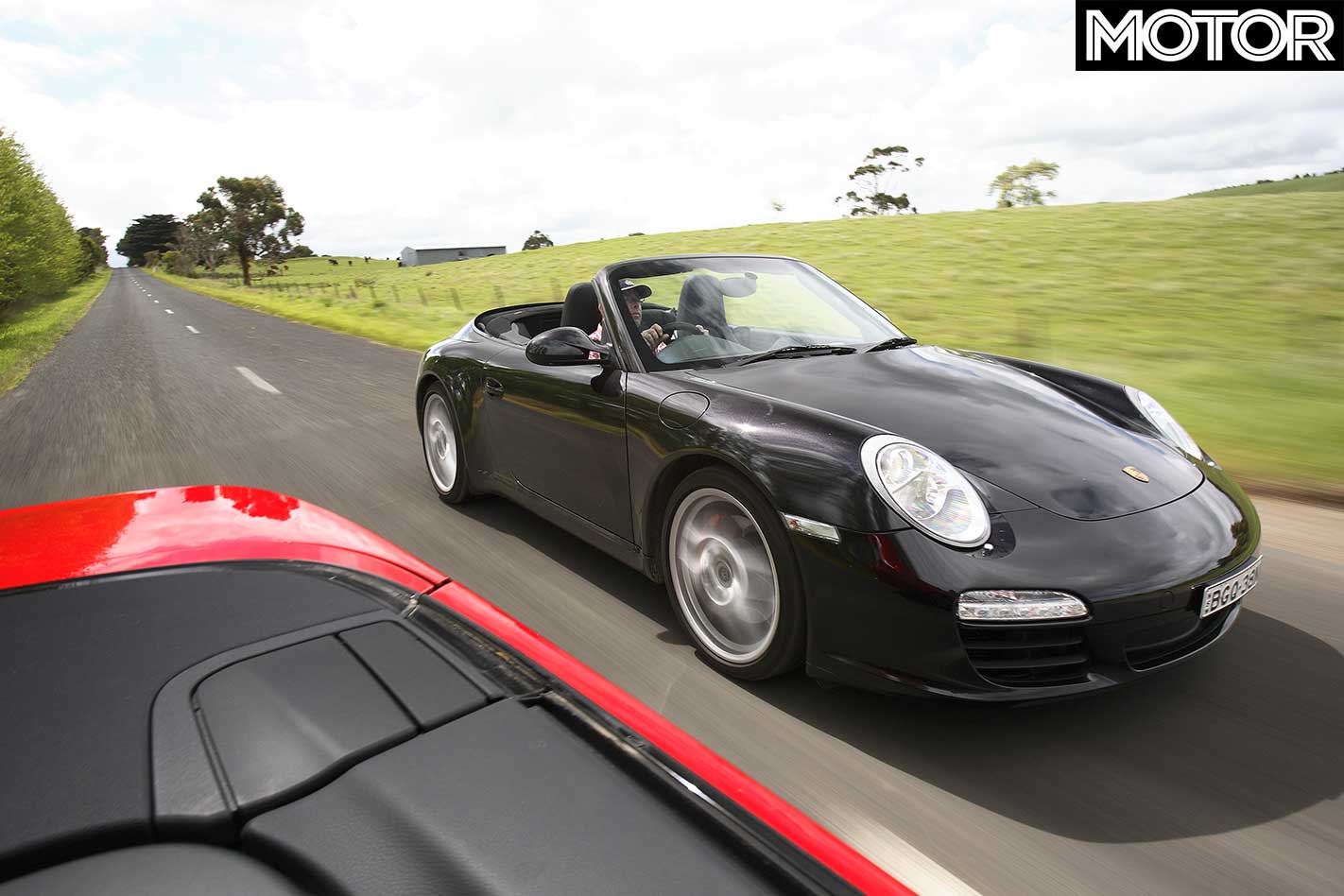
In soundtrack terms the BMW gets the nod, too. Even with the roof up, the induction noise down low and the exhaust bellow up high mark it out as a real crooner. Drop the lid and it’s a hundred times louder and a thousand times better.
Those who like wailing flat sixes will still dig the Porsche, of course, but it’s a moaning, satanic kind of racket. Mind you, it matches the slightly wholegrain feel that Porsche seems to have started building into its engines again. Hallelujah.
For a while there (about the same time as the 911 went liquid-cooled) the dramatic howling seemed to go AWOL. But it’s back now and the experience, top up or down, is the better for it.
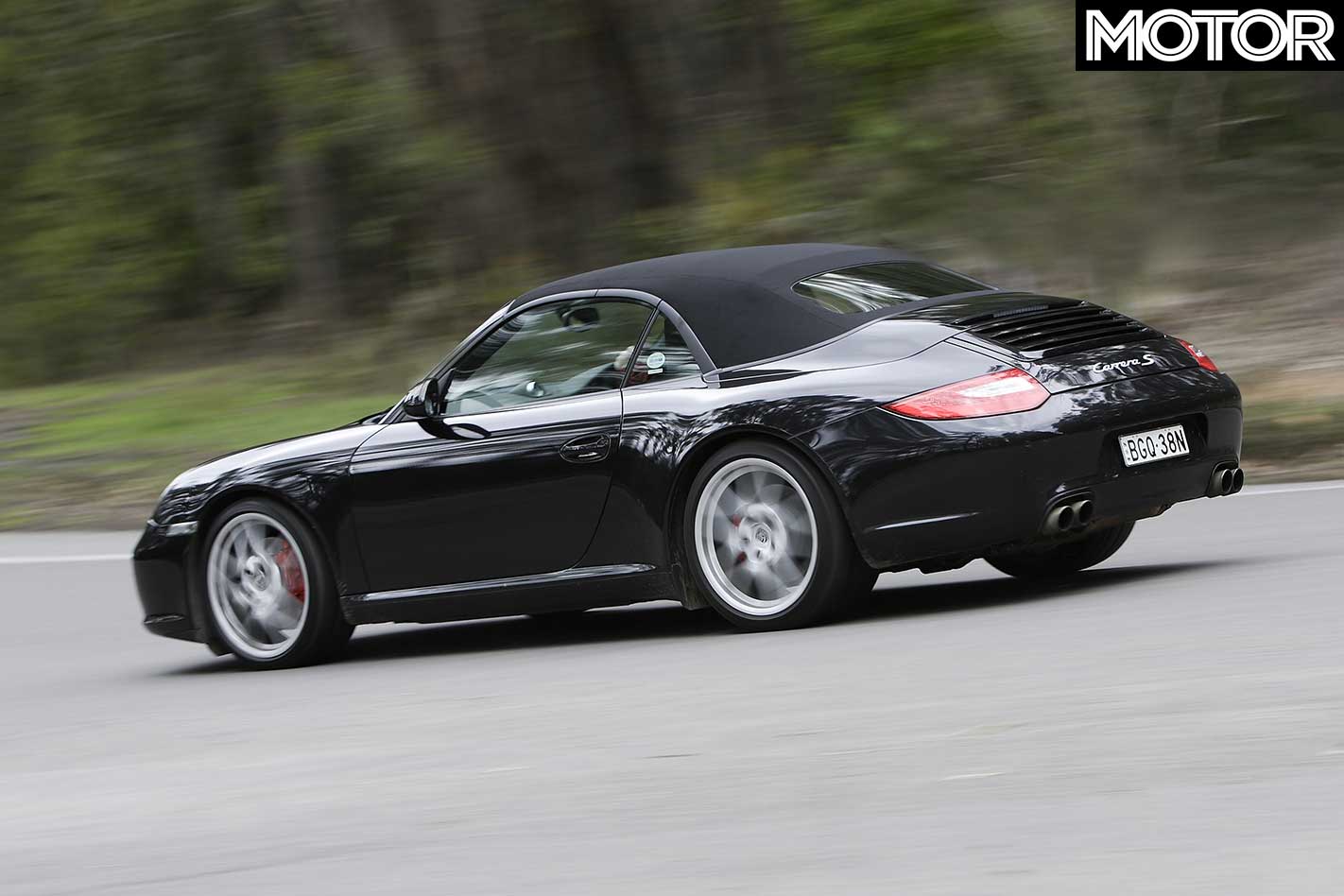
It’s a bit hard to choose between the two gearboxes in terms of what they do and how they do it. Both can feel just a t-e-e-n-s-y bit clumsy at really low speeds when the clutches have just taken up, but beyond that, it seems the world has finally figured out how to make a computer operate a clutch.
Either ’box shifts like lightning in manual mode, too, and if you pick the right revs, you can also coax a little, muffled pfaff from the exhaust as the on-board brain cuts the spark between gears. Lovely. Use the BMW’s maximum-aggression shift mode or the Porsche’s Sport-plus button, and the gearbox in question will be absolutely hopeless in auto mode.
In either case, the thing won’t shift until you’ve redlined it and kickdowns are violent and permanent − not recommended and less than useless in traffic. But leave them on the softer settings and auto mode is not only viable, it’s actually still entertaining with downshift blips thrown in.

Overall, ignoring the dollar side of things, I’d give the gearbox gong to the Porsche. For a start, the brake pedal is in the right spot for left-foot braking (a cinch in a two-pedal car) while the BMW’s pedal is too far east to allow the same technique and seems like an oversight at best.
But mainly it’s the little bit of creep built into the PDK that wins the day. Idling about car parks with tiny throttle inputs has always been the clutchless manual’s downfall (one of them, anyway). But with the creep of the Porsche’s box (it actually feels like a conventional auto) it’s a simple matter of releasing the brake and letting the car crawl forwards or backwards on its own. Nice.
Finally, the technology works. But it doesn’t alter my personal view which is if I’d wanted a computer to heel-and-toe for me, I wouldn’t have wasted years learning how to do it. And since I have learned it, I enjoy doing it.
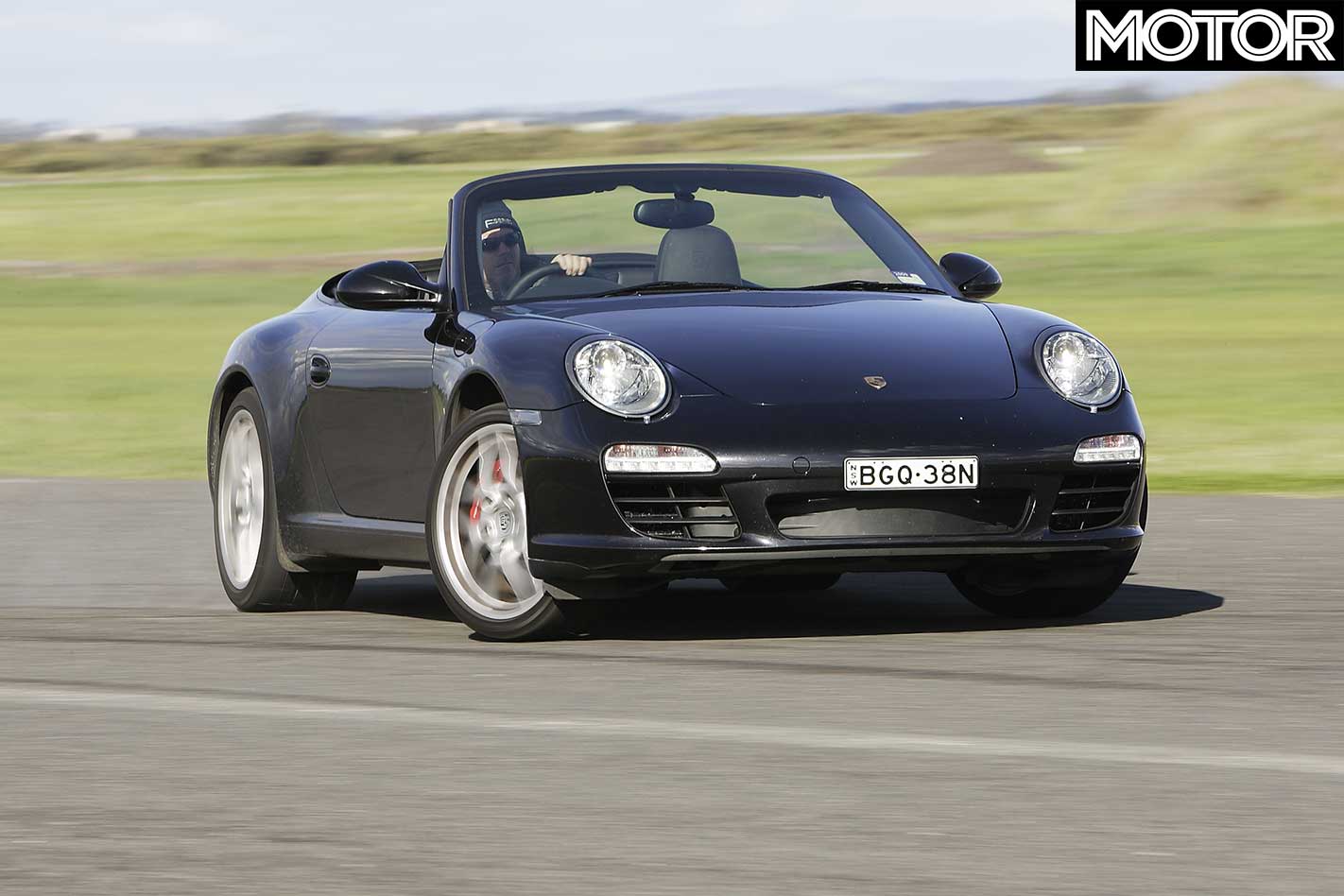
My Sunday Car will always have a clutch pedal. Fact. (Then again, I don’t own a PlayStation or listen to doof-doof, either).
In braking terms, there’s absolutely no reason to want anything more than either of these provide, particularly since the convertible versions of the M3 and 911 are the least likely to see track duty.
The same goes for handling, but only up to a point. Where the BMW is surefooted to the max, it lacks that last little bit of pointiness that the lighter (1510kg versus a rather portly 1830kg) Porsche delivers.
There’s a superb level of feedback through the Carrera’s wheel inherited from every rear-drive 911 before it and a greater feeling of being part of the car. And while there’s no doubting the M3’s plush ride, you still wind up wondering how the hell Porsche manages to dial so much front-end compliance into what is clearly a sharp instrument.
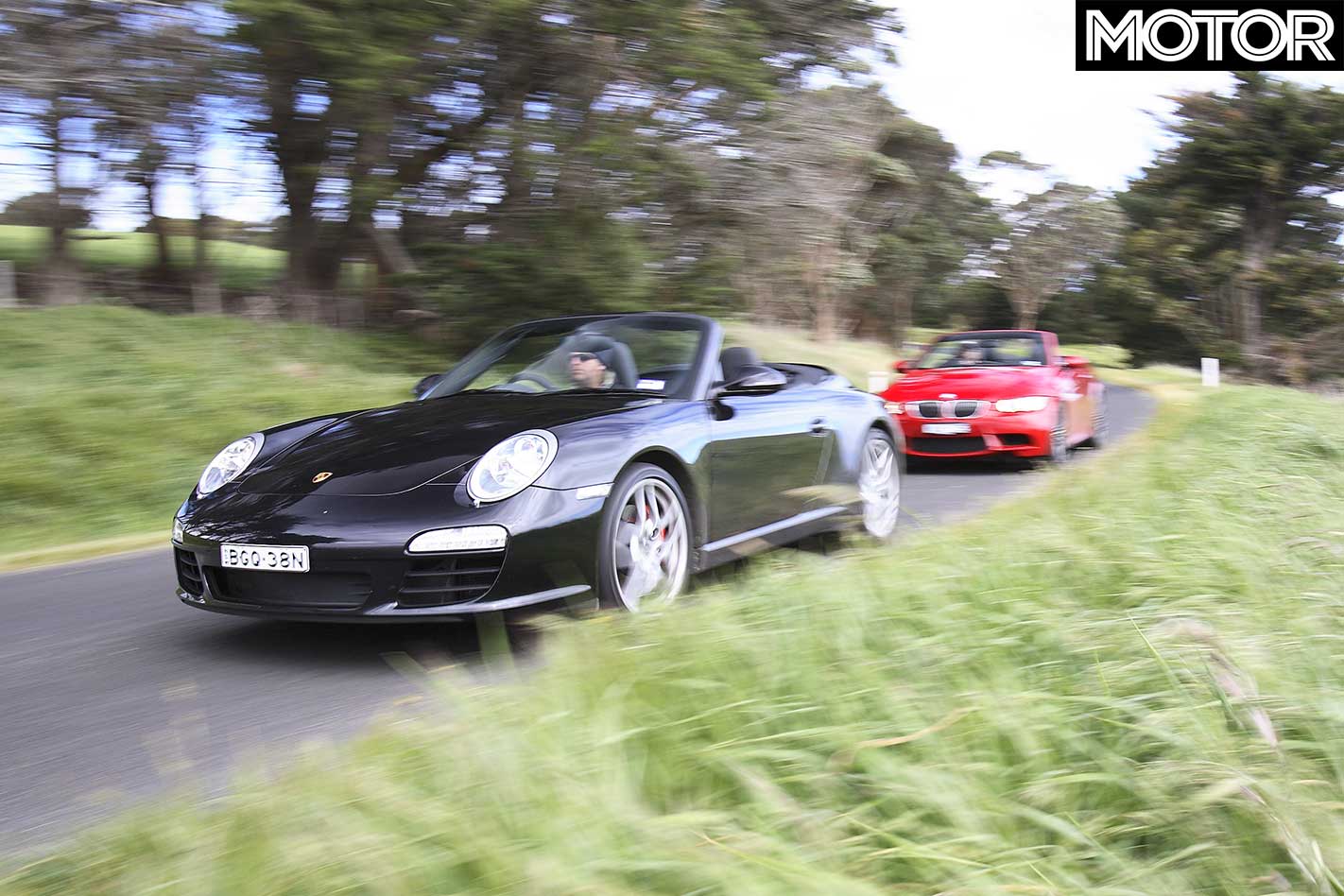
The view down the 911’s bonnet between the two headlight tunnels is still one of motoring’s scene-stealers. Inside, the $6990 being asked for the Carrera’s aluminium trim option seems like a bit of a pisstake, but it’s equally difficult to fathom BMW’s current fascination for dashboards that visually push the driver away. And iDrive? Pass.
But if you have to carry four people, then the BMW is your gadget. Not only is the back seat comfy with loads of legroom, the 911’s is little more than a token reference to the notion. The cushions are tiny, legroom is non-existent and the back-rest is actually beyond vertical. Forget it.
The BMW’s other advantage is that all that weight has been added in the right places and there’s slightly less scuttle-shake than in the 911.
In the end, it will always be personal, so here’s my two-bobs-worth.
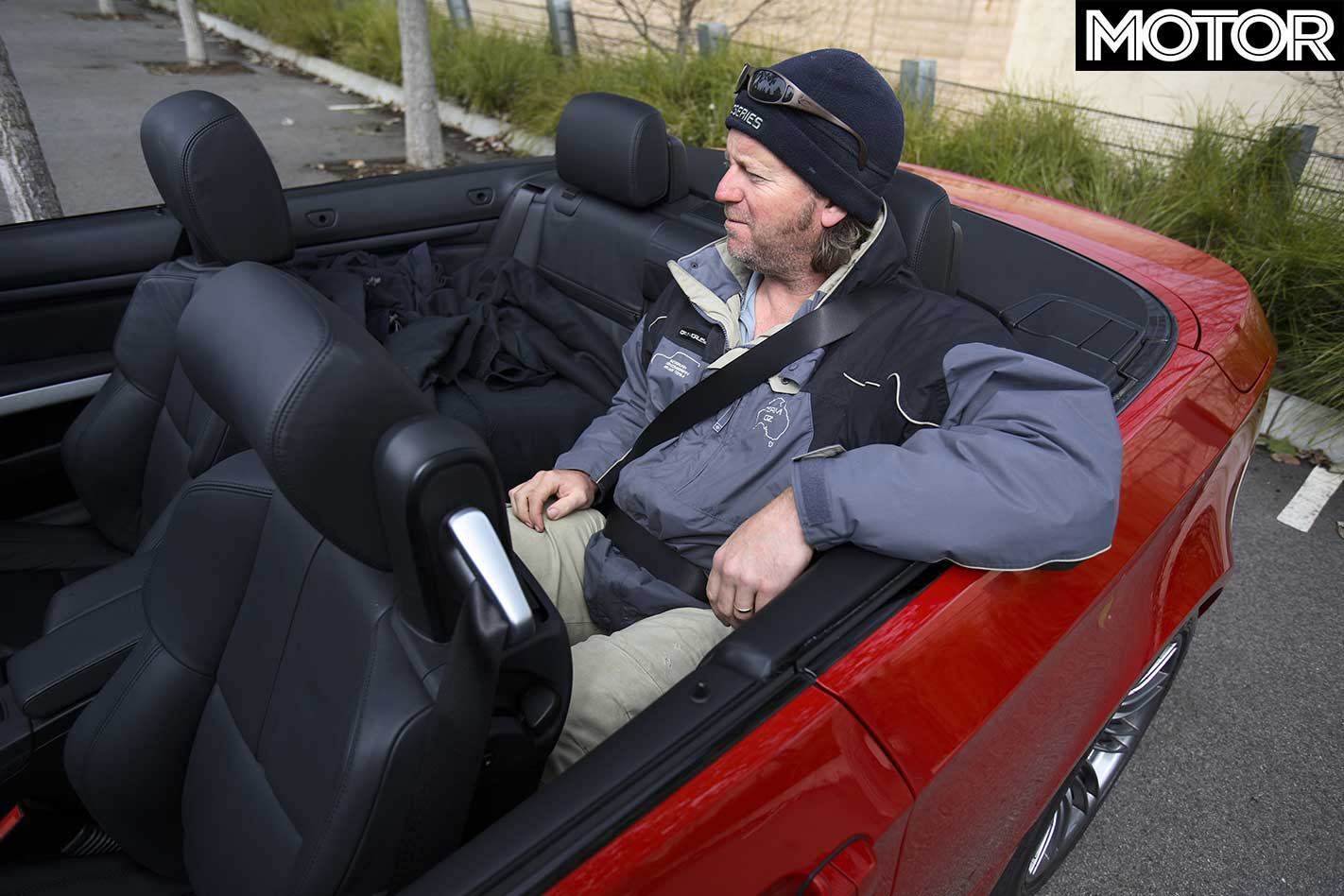
Thanks to the roofless, clutchless thing going on, one of these cars should probably become the default setting for buyers while the other is probably the last variant of its type you’d consider.
The M3 in its current V8 form has, for me at least, lost some of that visceral appeal that made the screaming six such a fave. Which means that the current model is a less hard-edged (softer seems the wrong word) version of the concept. And in that context, I reckon the option of the folding roof and the DCT tranny makes all sorts of sense. You get a coupe and a convertible, a manual and an auto all for the asking price of $172,142.
But the Carrera S is the opposite of how I’d spec my own 911. The convertible does it no structural or aesthetic favours and the PDK gearbox is good, but I’d rather shift cogs myself in such an otherwise pure concept.
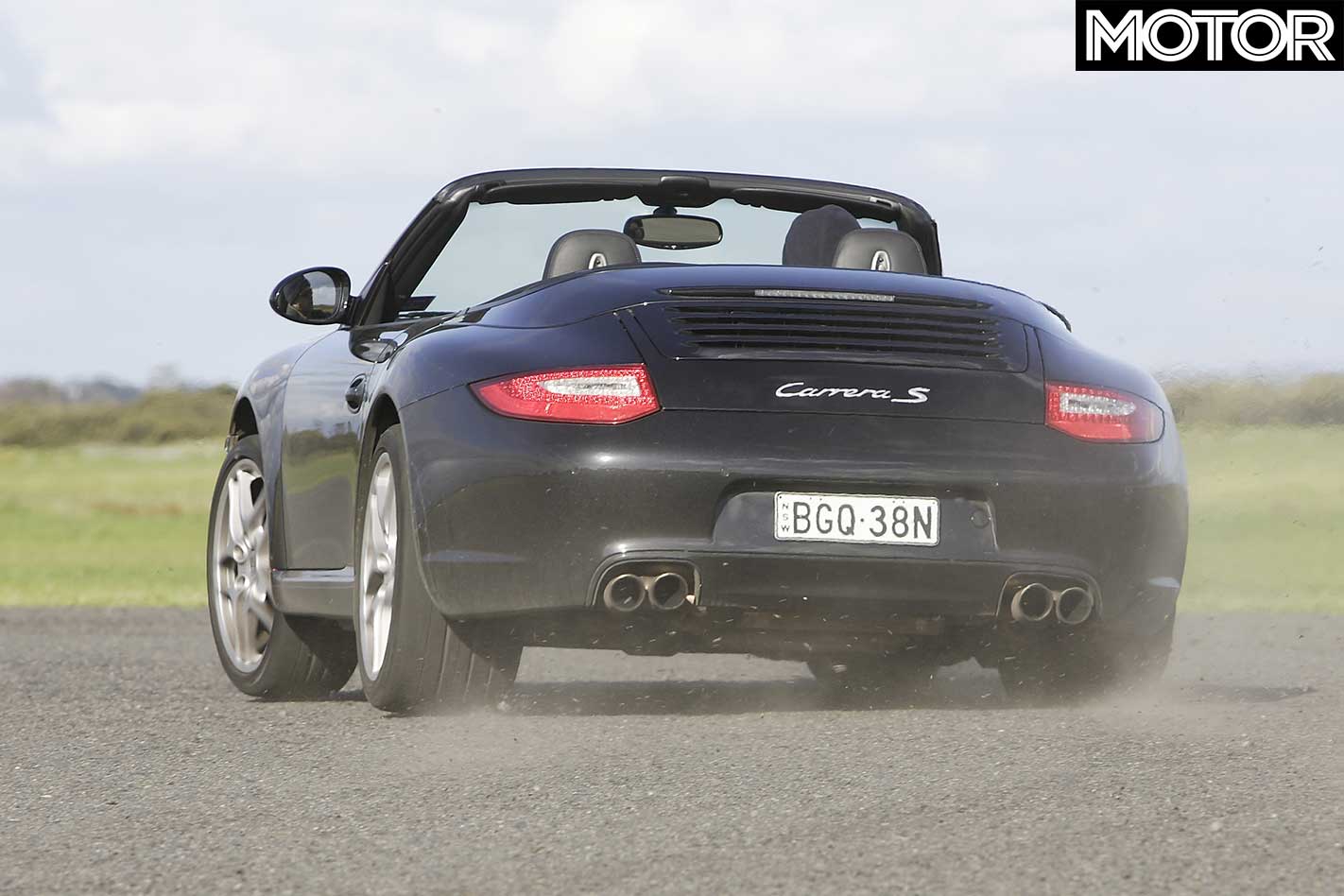
Oh, and the dubious honour of lowering a canvas roof adds more than $22,000 to the price at $277,300 with the PDK ($291,281 as tested).
Meanwhile, while I don’t like clutchless manuals, convertibles and editors, I’ll also add fence-sitting to the list, so I’d have to pick the M3 simply on price and because it’s less compromised, even if the gearbox isn’t quite as clever.
But you want the real truth? I wouldn’t buy either of them.
Fast Facts
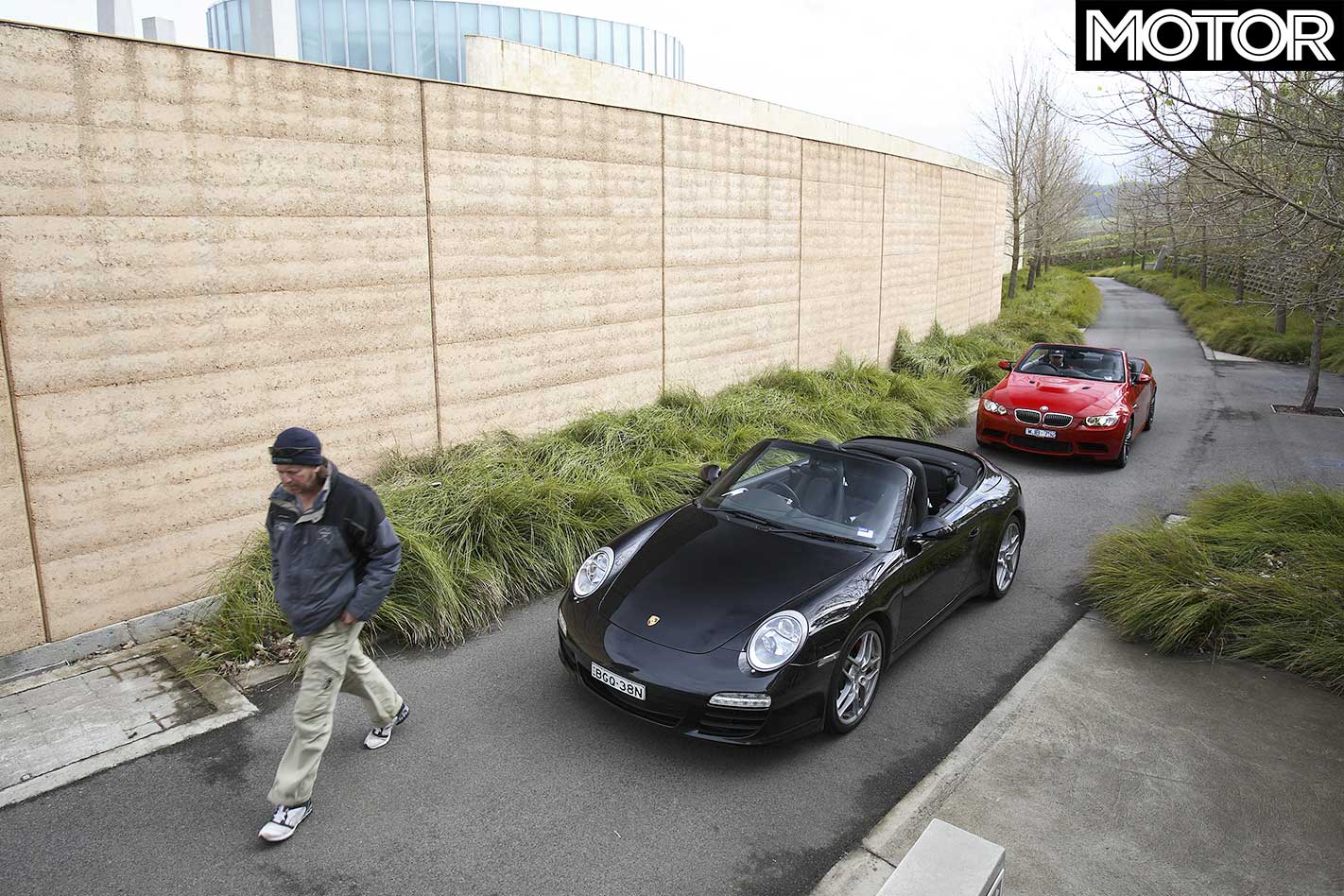
| u00a0 | Porsche 997 911 Carrera S Cabriolet | BMW E92 M3 Convertible |
| Body | 2-door, 2+2 seat convertible | 2-door, 4-seat convertible |
| Drive | rear-wheel | |
| Engine | 3800cc flat-6, DOHC, 24v | 3999cc 90-degree V8, DOHC, 32v |
| Bore x Stroke | 102.0 x 77.5mm | 92.0 x 75.2mm |
| Compression | 12.5:1 | 12.0:1 |
| Power | 283kW @ 6500rpm | 309kW @ 8300rpm |
| Torque | 420Nm @ 4400rpm | 400Nm @ 3900rpm |
| Power/Weight | 187kW/tonne | 168kW/tonne |
| Transmission | 7-speed dual-clutch | |
| Weight (dry) | 1510kg | 1830kg |
| Suspension (f) | struts, locating links, adaptive dampers, anti-roll bar | struts, A-arms, adaptive dampers, anti-roll bar |
| Suspension (r) | multi-links, coil springs, adaptive dampers, anti-roll bar | |
| L/W/h | 4355/1808/1300mm | 4615/1804/1392mm |
| Wheelbase | 2350mm | 2761mm |
| Tracks | 1486/1516mm (f/r) | 1540/1539mm (f/r) |
| Brakes (f) | 330mm ventilated/drilled discs, four-piston calipers | 360mm ventilated/drilled discs, single-piston calipers |
| Brakes (r) | 330mm ventilated/drilled discs, four-piston calipers | 350mm ventilated/drilled discs, single-piston calipers |
| Wheels | 19.0 x 8.0-inch (f), 19.0 x 11.0-inch (r) | 19.0 x 8.5-inch (f), 19.0 x 9.5-inch (r) |
| Tyre Sizes | 235/35ZR19 (f), 295/30ZR19 (r) | 245/35ZR19 (f), 265/35ZR19 (r) |
| Tyres | Michelin Pilot Sport | Michelin Pilot Sport 2 |
| Price | $277,300 ($291,281 as tested) | $183,450 ($183,450 as tested) |
| Pros | Excellent engine; sublime handling and steering feedback | Metal roof offers two cars in one; brakes; plush ride |
| Cons | Scuttle shake with roof down; price; poseuru2019s 911 | Heft; DCT better than old SMG, but not as clever as 911u2019s PDK |
| Rating | 4.5 out of 5 stars | 4 out of 5 stars |
The Strip
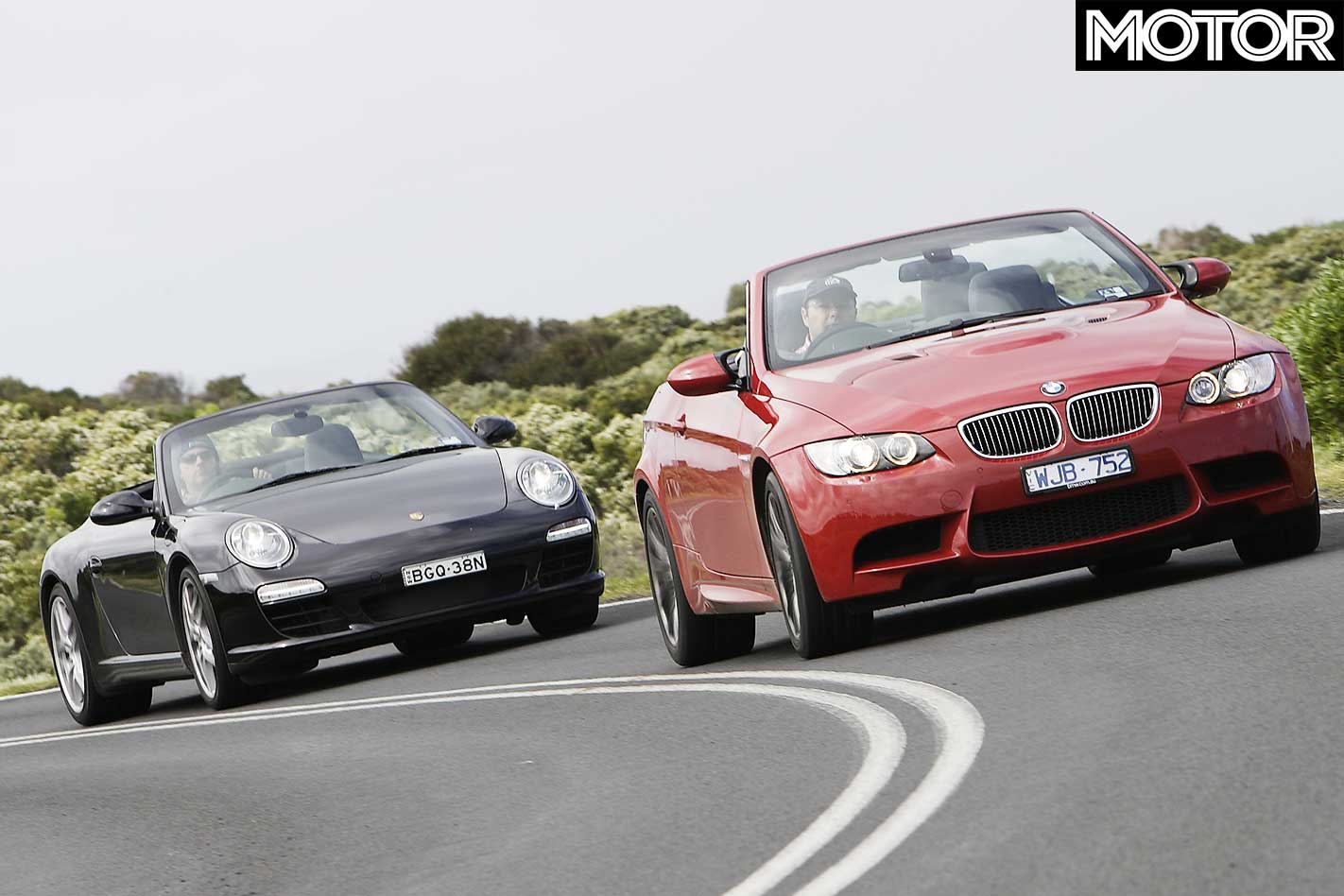
| u00a0 | 911 Carrera S Cabriolet | M3 Convertible | |
| 0-10km/h | 0.2sec | 0.3sec | |
| 0-20km/h | 0.5sec | 0.7sec | |
| 0-30km/h | 0.9sec | 1.0sec | |
| 0-40km/h | 1.2sec | 1.5sec | |
| 0-50km/h | 1.6sec | 2.0sec | |
| 0-60km/h | 2.0sec | 2.5sec | |
| 0-70km/h | 2.5sec | 3.1sec | |
| 0-80km/h | 3.0sec | 3.6sec | |
| 0-90km/h | 3.6sec | 4.3sec | |
| 0-100km/h | 4.2sec | 5.0sec | |
| 0-110km/h | 4.9sec | 5.7sec | |
| 0-120km/h | 5.6sec | 6.7sec | |
| 0-130km/h | 6.5sec | 7.6sec | |
| 0-140km/h | 7.4sec | 8.7sec | |
| 0-150km/h | 8.4sec | 9.8sec | |
| 0-160km/h | 9.4sec | 10.9sec | |
| 0-170km/h | 10.6sec | 12.3sec | |
| 0-180km/h | 11.9sec | 13.8sec | |
| 0-400m | 12.4sec @ 183.8km/h | 13.1sec @ 176.1km/h | |
| 80-120km/h | 2.6sec | 3.0sec | |
| Top speed | 302km/h (claimed) | 250km/h (claimed) | |
| Speed in Gears | |||
| 1st | 72km/h @ 7500rpm | 70km/h @ 8400rpm | |
| 2nd | 124km/h @ 7500rpm | 115km/h @ 8400rpm | |
| 3rd | 172km/h @ 7500rpm | 156km/h @ 8400rpm | |
| 4th | 218km/h @ 7500rpm | 200km/h @ 8400rpm | |
| 5th | 262km/h @ 7500rpm | 241km/h @ 8400rpm | |
| 6th | 302km/h @ 7039rpm | 250km/h @ 7505rpm | |
| 7th | 302km/h @ 4959rpm | 250km/h @ 6254rpm | |
Roofless Warriors
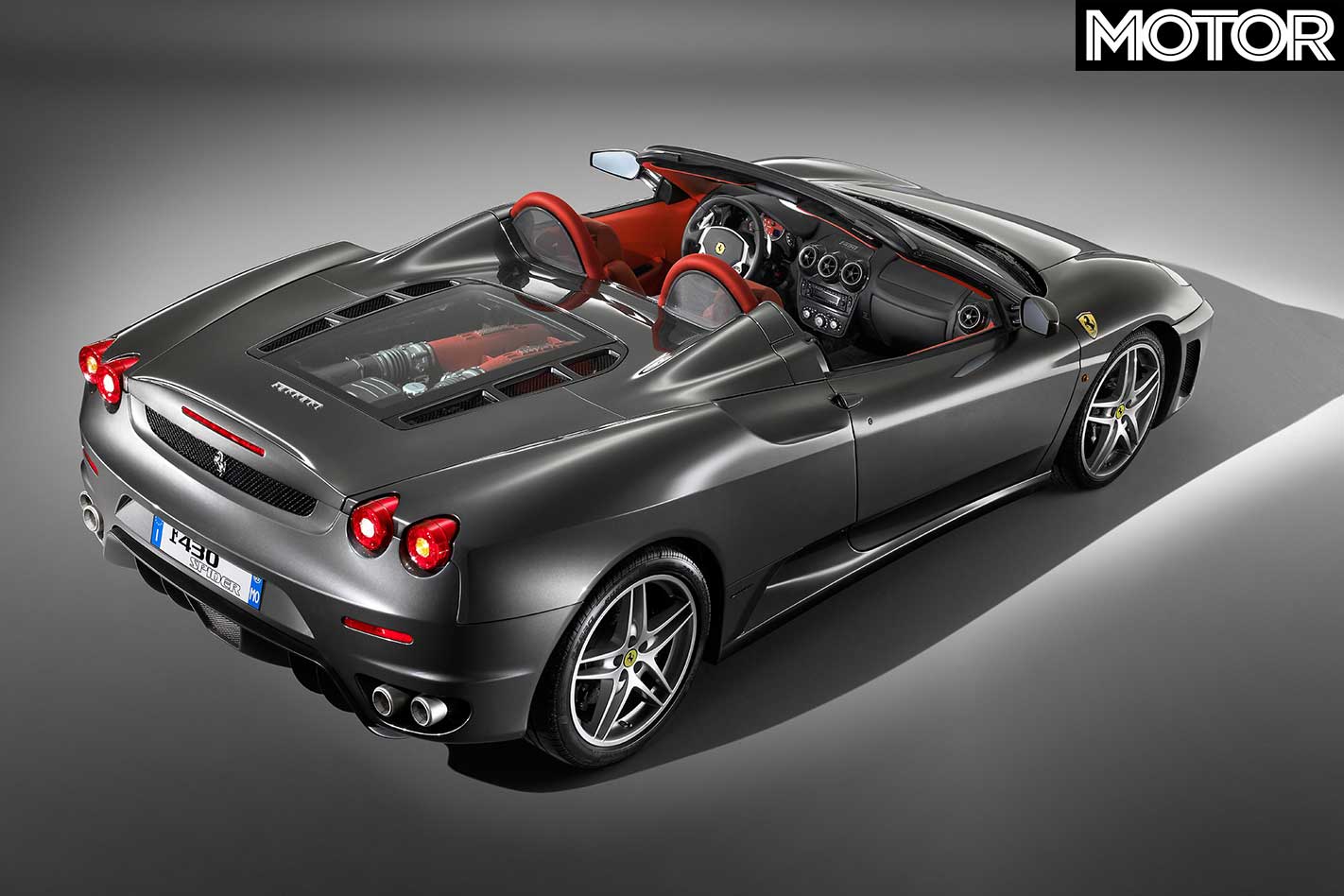
So you want to send your old man’s toupee into the wind?
The 911’s brilliant 0-100km/h sprint of 4.2sec shows going topless doesn’t mean going without horsepower (Nissan Micra C+C aside). Ferrari’s claim for the F1-boxed F430 Spider’s 0-100 pips our 911’s time by 0.1sec, while the McLaren SLR 722 S scorches 100 in 3.7 and the Pagani Zonda F Roadster needs just 3.6sec.
And although Lambo’s LP640 Spyder is the king of convertibles at 3.4sec, the squllion-dollar Bugatti Veyron Gran Sport (with a targa roof) about to be launched will almost certainly reign supreme.
Dual-Clutch Gearbox Explained
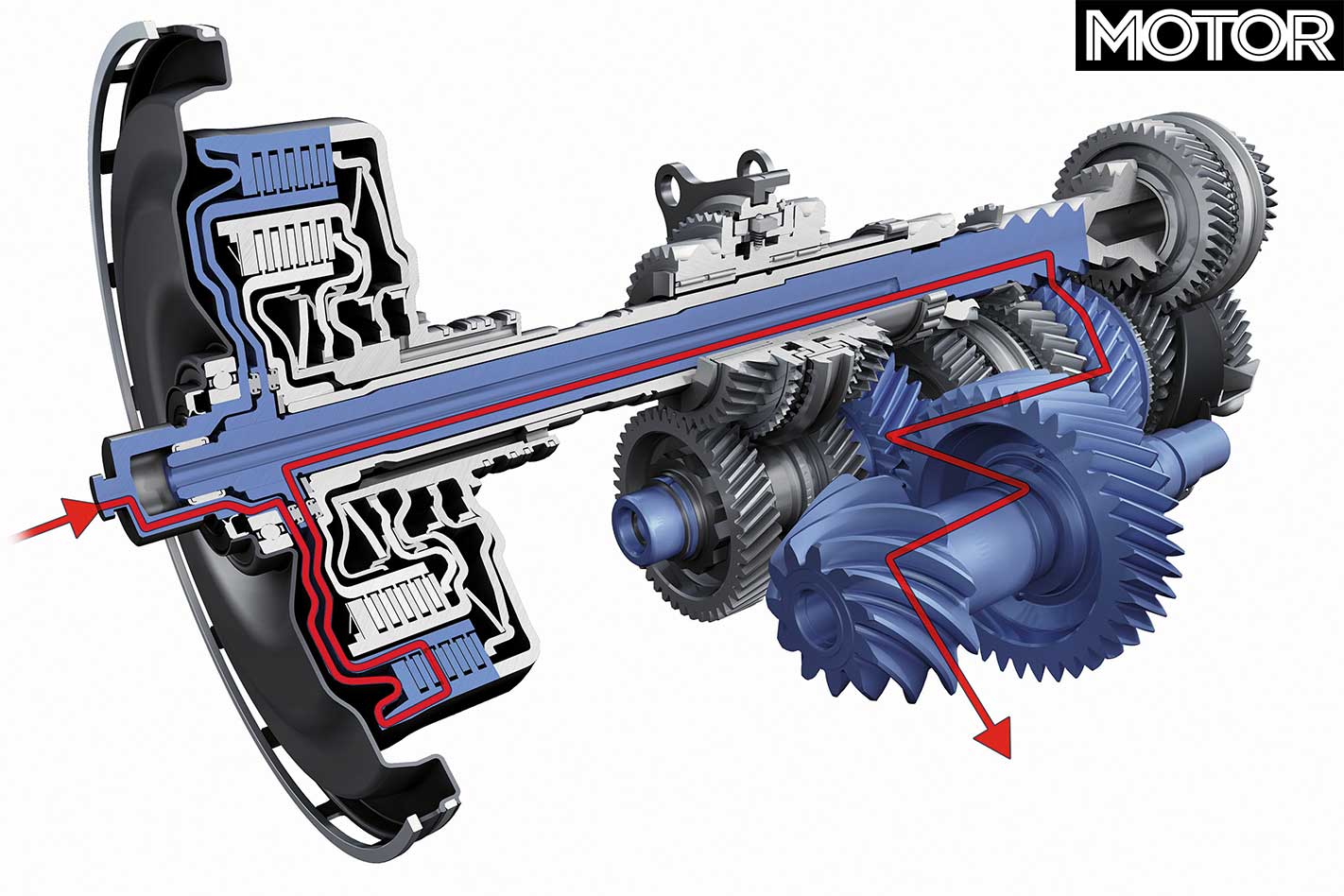
So you’ve drawn the short straw and been duped with a double-clutch ’box? It’s no dud option anymore. While BMW’s old SMG was pathetic as an auto, and VW Group’s DSG still chokes in an instant while hunting for gears, Porsche’s PDK shows it can be done properly. So what’s better about PKD and BMW’s M-DCT over the outdated SMG?
The adoption of twin-clutch arrangements is what has moved the goal posts and made this a better game. Pre-selecting the next gear on the alternative of the two shafts has enabled quicker, smoother changes, while the M-DCT’s slow-speed assistance set-up has eliminated the baulkiness that persists in the SMG and DSG ’boxes at low speeds. Try doing a tight three-point turn in an SMG-ed M5…
Nissan’s R35 GT-R six-speed transaxle does the job superbly, and the technology is becoming available in less exotic machines like Chrysler’s Journey, while even Hyundai is developing its own.

